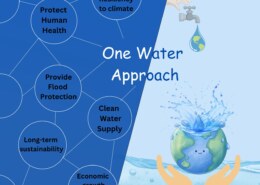What scientific advancements are needed to effectively combat climate change by 2050?
E-waste, or electronic waste, poses significant environmental threats. The improper disposal of e-waste leads to the release of hazardous substances such as lead, mercury, cadmium, and brominated flame retardants into the environment. These toxins can leach into soil and water, contaminating ecosystRead more
E-waste, or electronic waste, poses significant environmental threats. The improper disposal of e-waste leads to the release of hazardous substances such as lead, mercury, cadmium, and brominated flame retardants into the environment. These toxins can leach into soil and water, contaminating ecosystems and posing health risks to humans and wildlife. Additionally, e-waste contributes to air pollution when incinerated, releasing harmful dioxins and furans.
The environmental impact extends to resource depletion, as valuable materials like gold, silver, and rare earth elements are often lost when electronics are discarded rather than recycled. The extraction of these materials from natural resources is energy-intensive and environmentally damaging.
Mitigating the impact of e-waste requires a multi-faceted approach. Promoting the recycling and proper disposal of electronics is crucial. Governments and organizations can implement and enforce stringent e-waste regulations, ensuring that manufacturers take responsibility for the entire lifecycle of their products. This can be supported by developing efficient e-waste recycling infrastructure and encouraging the public to participate in recycling programs.
Furthermore, adopting a circular economy model can reduce e-waste generation. This involves designing products for longevity, repairability, and recyclability, and fostering a market for refurbished electronics. Public awareness campaigns can also educate consumers on the environmental impact of e-waste and the importance of responsible disposal practices.
See less

Artificial photosynthesis: Developing synthetic systems that can mimic and improve upon natural photosynthesis to efficiently convert sunlight, water, and CO2 into fuels and useful chemicals. Fusion energy: Achieving commercially viable nuclear fusion reactors that provide abundant, clean energy witRead more
These advancements represent more speculative or cutting-edge areas of research that could potentially provide transformative solutions to climate change, going beyond the more established approaches mentioned in the original document
See less